| |
Pontanus的日誌本08 大港,2024
藝術家駐台江創作計畫
台江文化中心,台南台灣
The Diary 08 of Pontanus - Taikang, 2024
Artist Residency in Taikang Creative Project,
TaiKang Cultural Center, Tainan, Taiwan
第八輯《大港》為2024年進駐台南台江文化中心的「藝術家駐台江創作計畫」,此輯將敘事時空拉至1652年的台江內海,台江內海作為過去先民渡台的重要入口,數百年來歷經荷蘭、清國、日本時期,可說是台灣漢人文化圈形塑的起點,更見證了島嶼早期開發歷史,大港則是台江的閩南語音譯。《Pontanus的日誌本08 大港》透過一位澳門出生的華人與葡萄牙裔的混血兒Salvador Diaz意外來到大員港灣後的觀察與地圖的描繪,藉此看見大員與台江內海的地理位置面臨十七世紀東亞航海貿易航線要衝,這座島嶼如何順應時勢成就為貿易出口島鏈。經由這兩位異國情調的旅人狀態下,暸解到荷蘭東印度公司抵台初期的面貌,福爾摩沙人又如何面對資本式殖民,以及各族群在台灣海域貿易中的角色位置等。《大港》承繼《Pontanus的日誌本》系列創作脈絡,以十七世紀的台江做為對象,企圖透過文獻爬梳、田野走踏等勾勒想像昔日漢人大量進入福爾摩沙的歷史景況,再重返歷史現場對比內海陸化後的安南區與鄰近工業區眾多外籍移工現況,並化身為主角騎著Ubike從四草大橋穿越安南工業區,想像Pontanus當年橫跨內海時的所見,藉由講述表演、影像+書寫等跨領域藝術形式的展演,重新思考台南400年歷經時間淬煉下的時空紋理變遷,伴隨著福爾摩沙處境與政經影響下的全球化、後殖民等現象。 |
| |
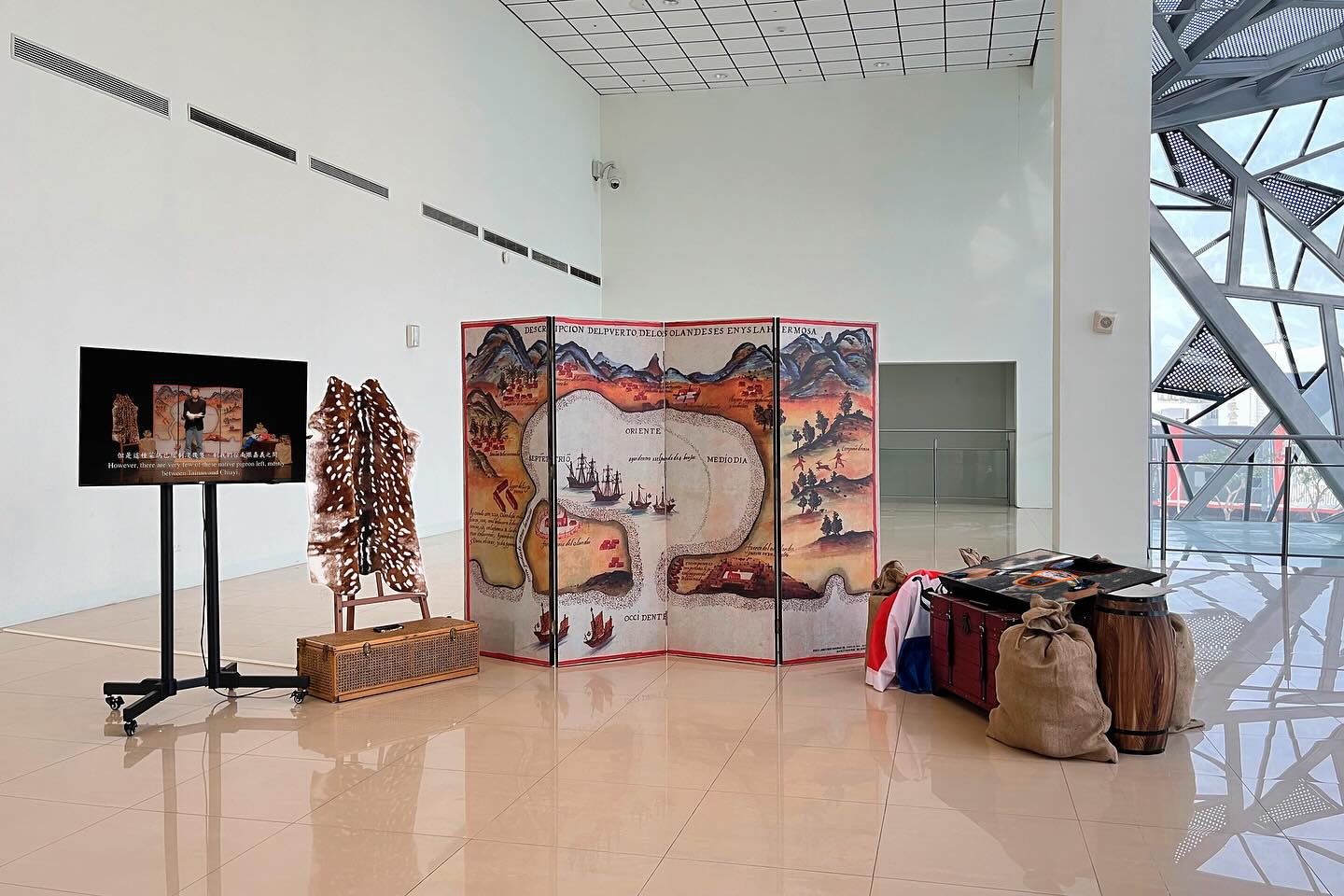 |
| |
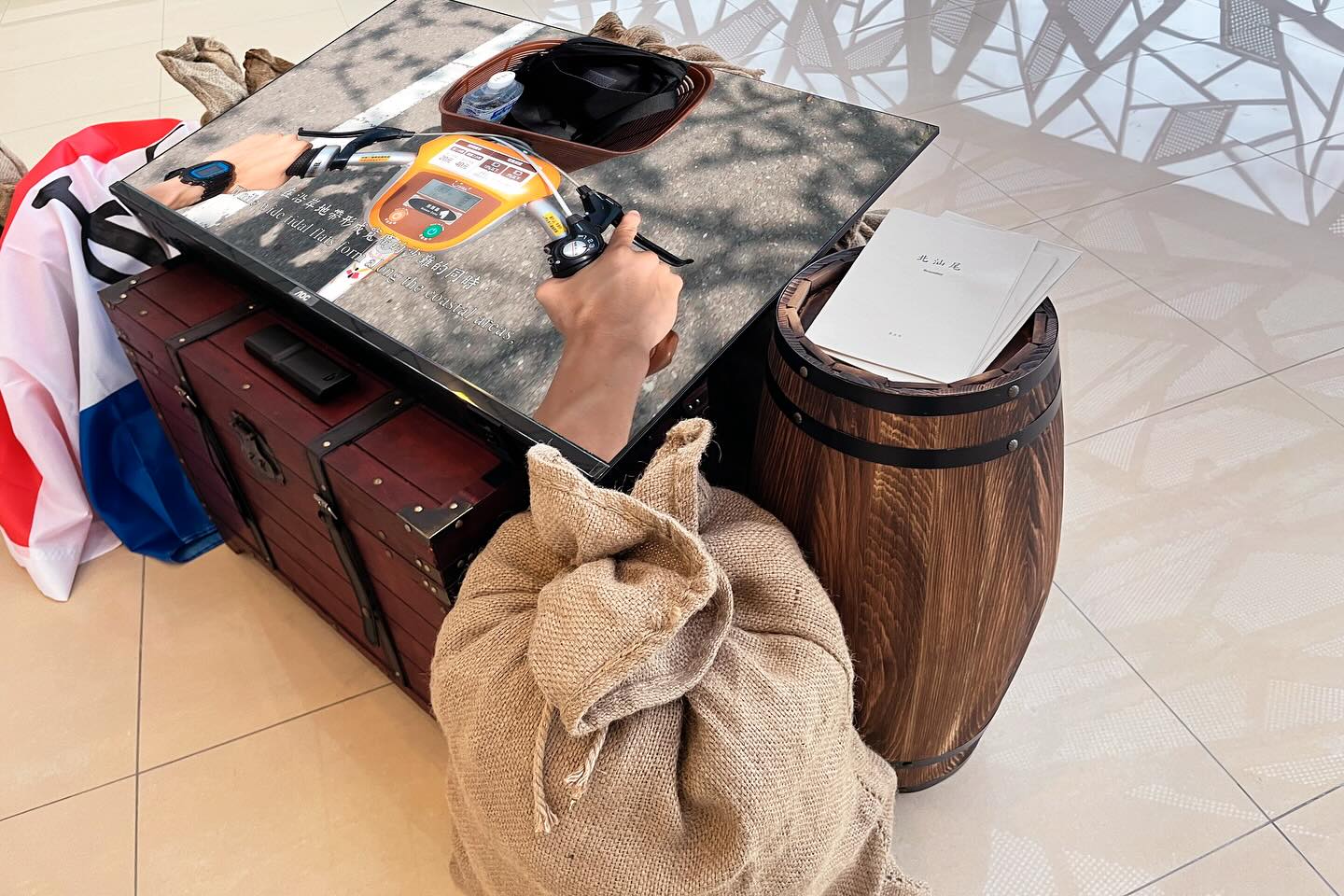 |
| |
|
| |
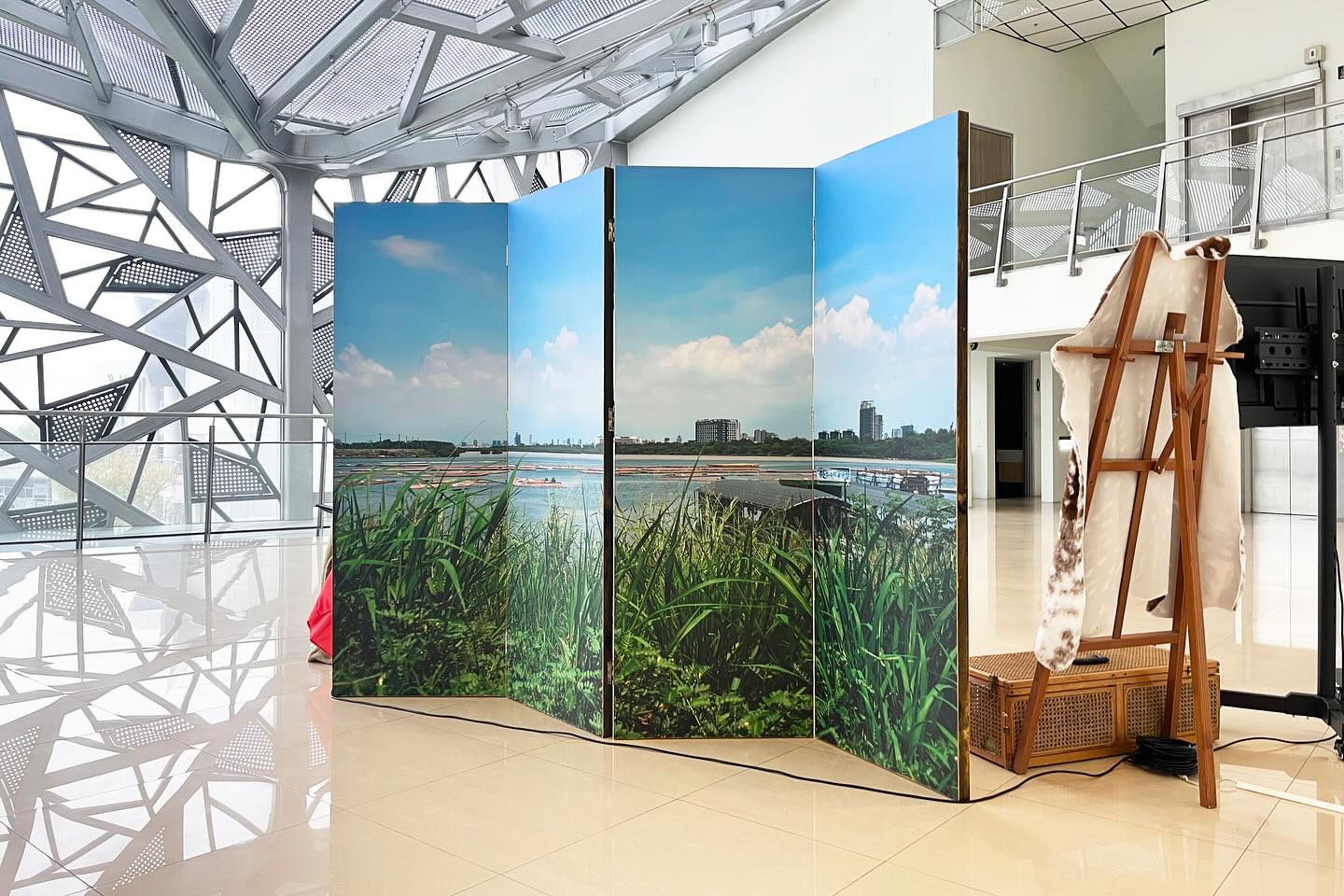 |
| |
 |
| |
|
| |
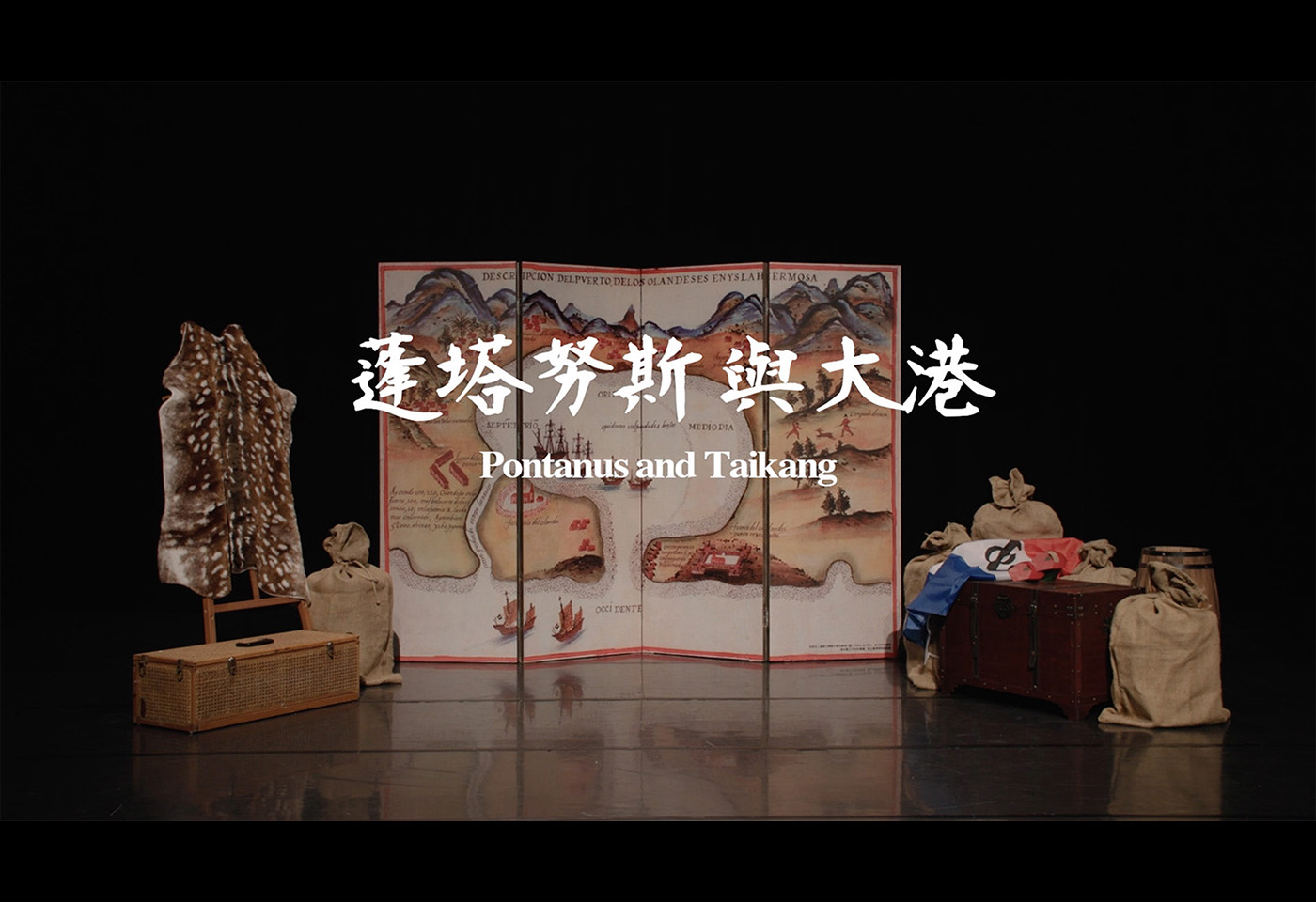 |
| |
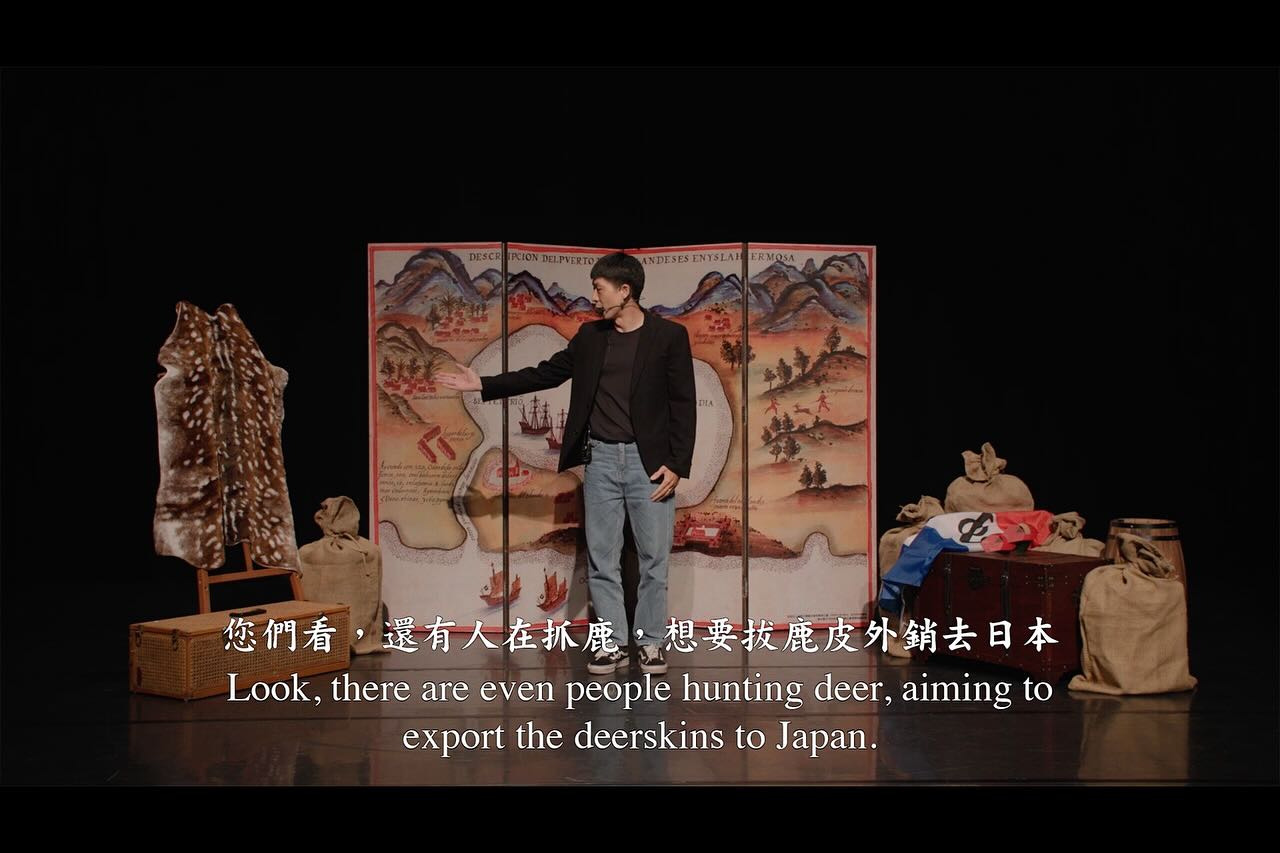 |
| |
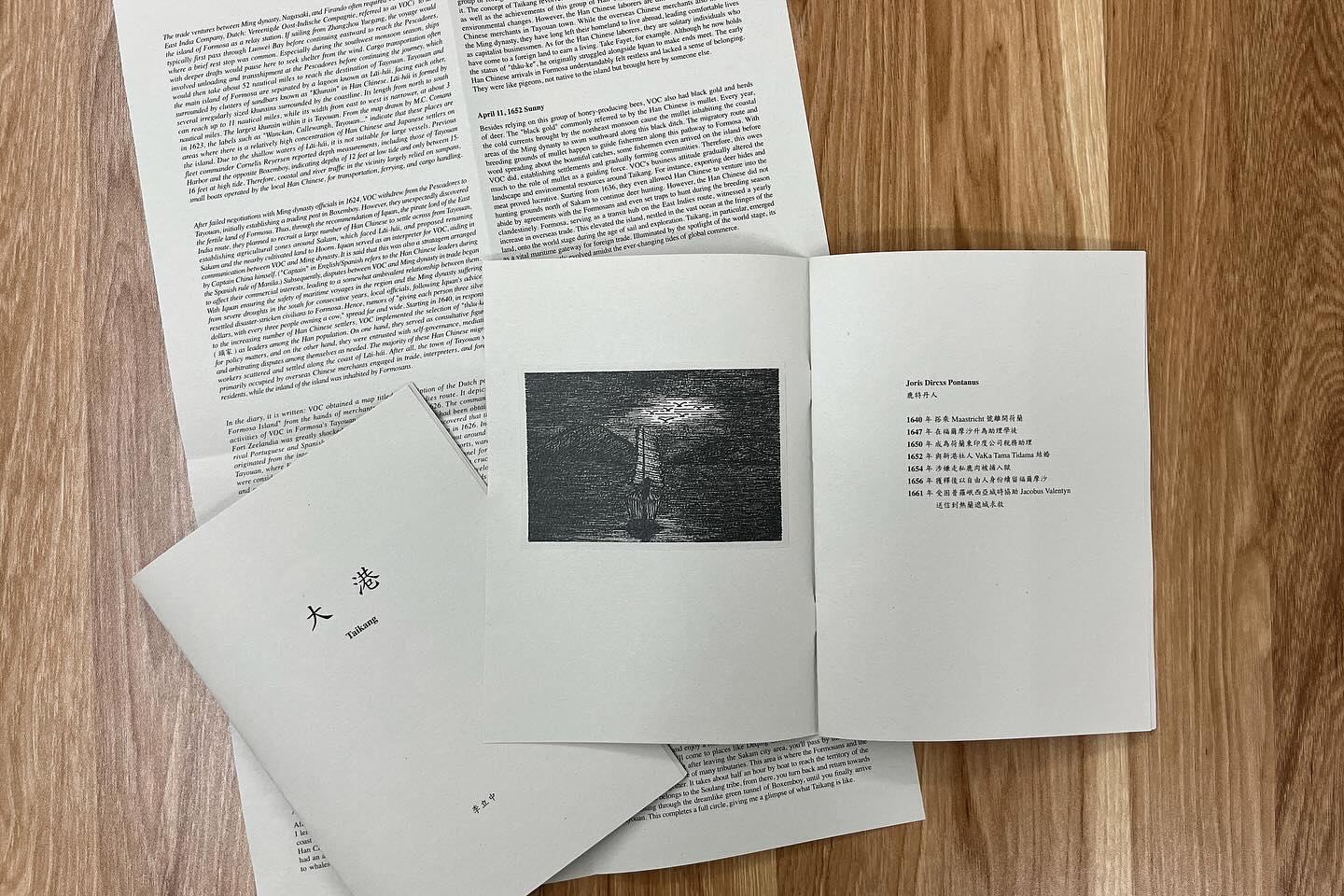 |
| |
Pontanus的日誌本07 爪哇日惹,2024
纖維工藝博物館,台中台灣
The Diary 07 of Pontanus - Jogja, Java, 2024
Museum Of Fiber Arts, Taichung Taiwan
第七輯《爪哇日惹》,日惹是爪哇島上最古老的城市之一,也是爪哇文化的搖籃,而歷史文化悠久之地,勢必也會淬煉出具地方特色的文化性,印尼賽鴿活動即是這樣演變而成。《Pontanus的日誌本07 爪哇日惹》即是以敘事主角Pontanus受荷蘭東印度公司委託返回爪哇島的一趟差旅為敘事架構,這趟自1640年搭乘Maastricht號離開荷蘭,抵達巴達維亞後輾轉來到福爾摩莎,多年後終於又再返回到爪哇島的旅程,藉此還特地拜訪日惹(時為馬打蘭蘇丹國Sultanate of Mataram首都),聽聞這座城市的賽鴿活動獨具特色,並以其所見所聞與所遇的虛構事件為作品文本,將筆者在2023年8月在印尼日惹的短期駐地研究心得,轉譯為Pontanus這趟充滿回憶的冒險。 |
|
| |
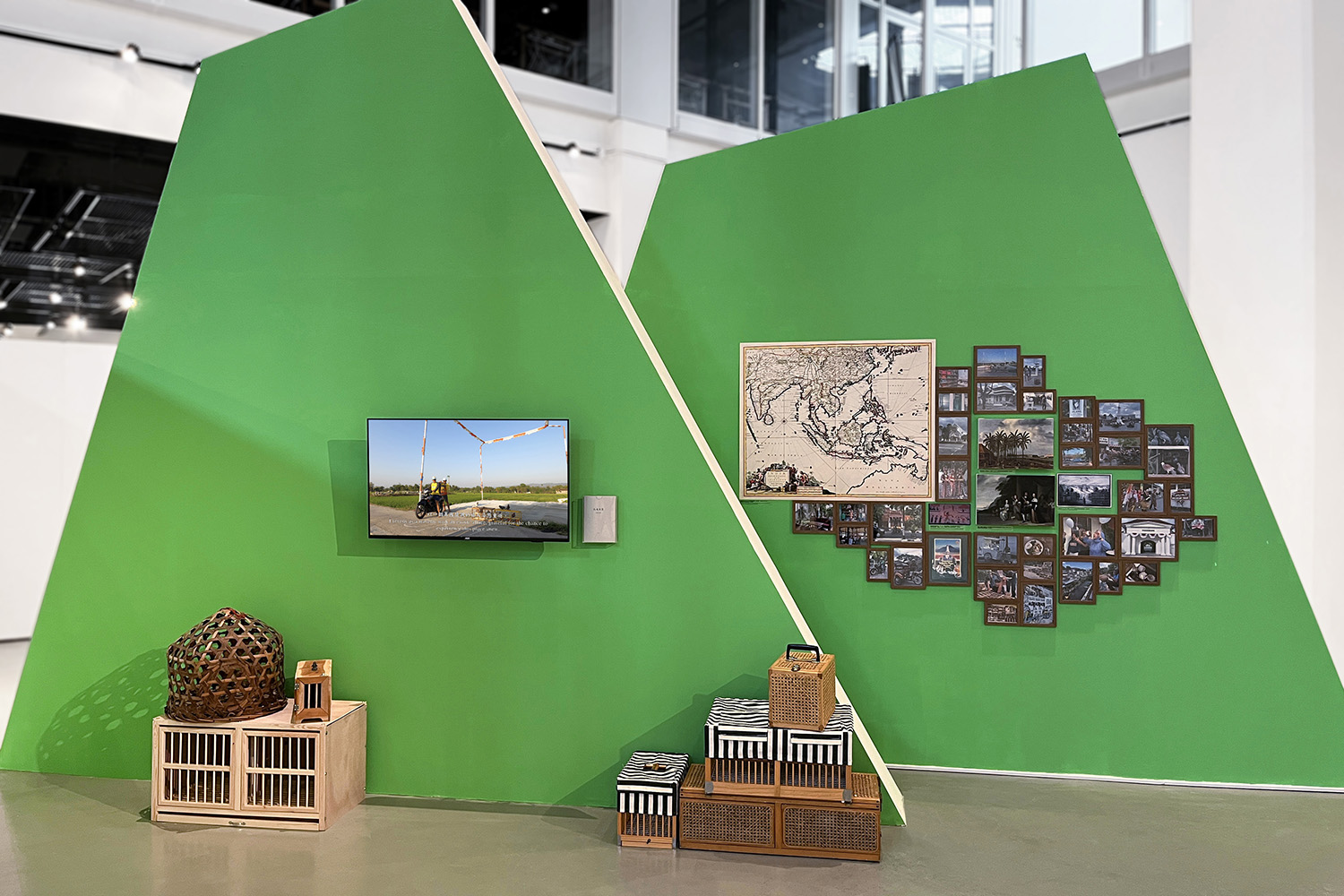 |
| |
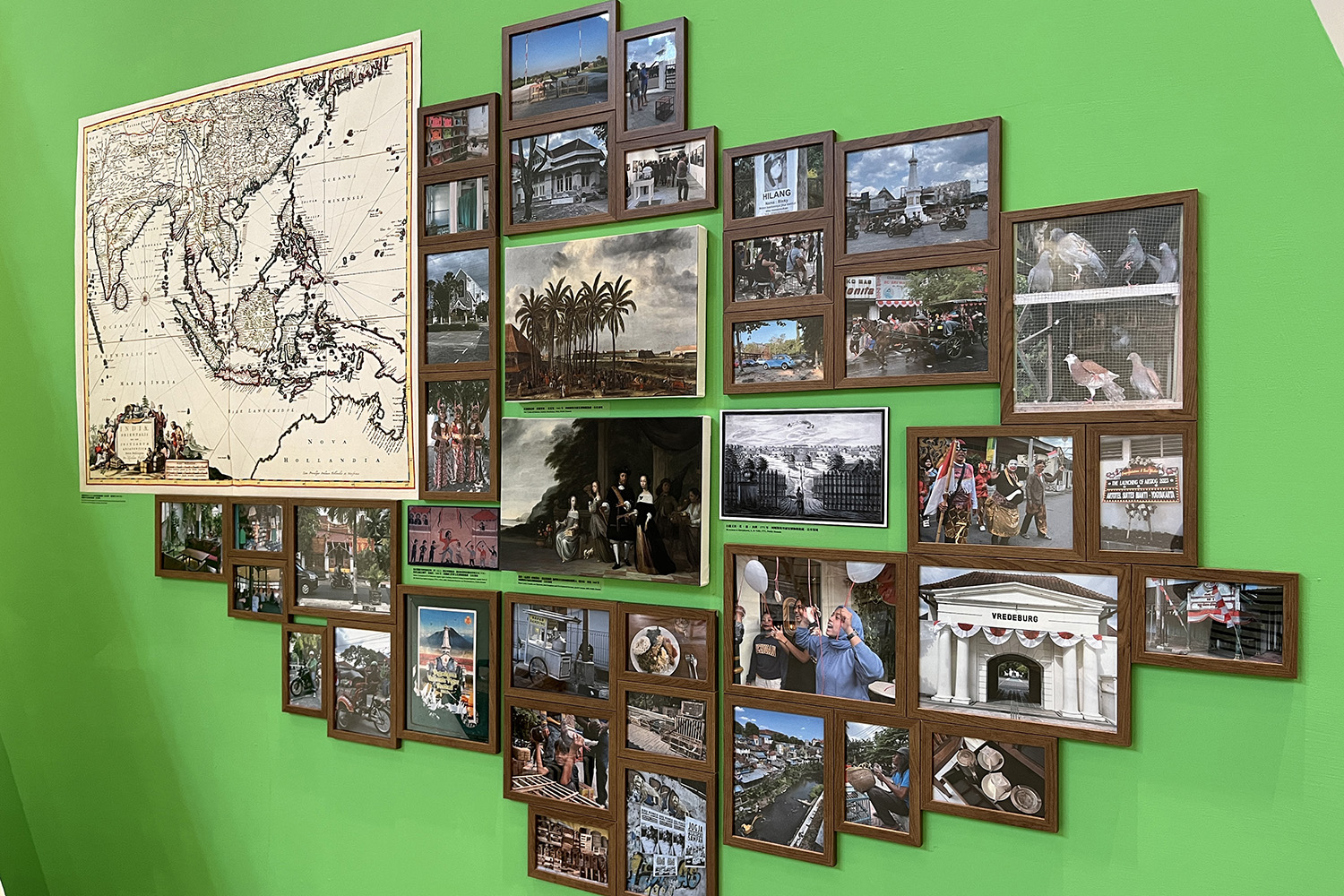 |
| |
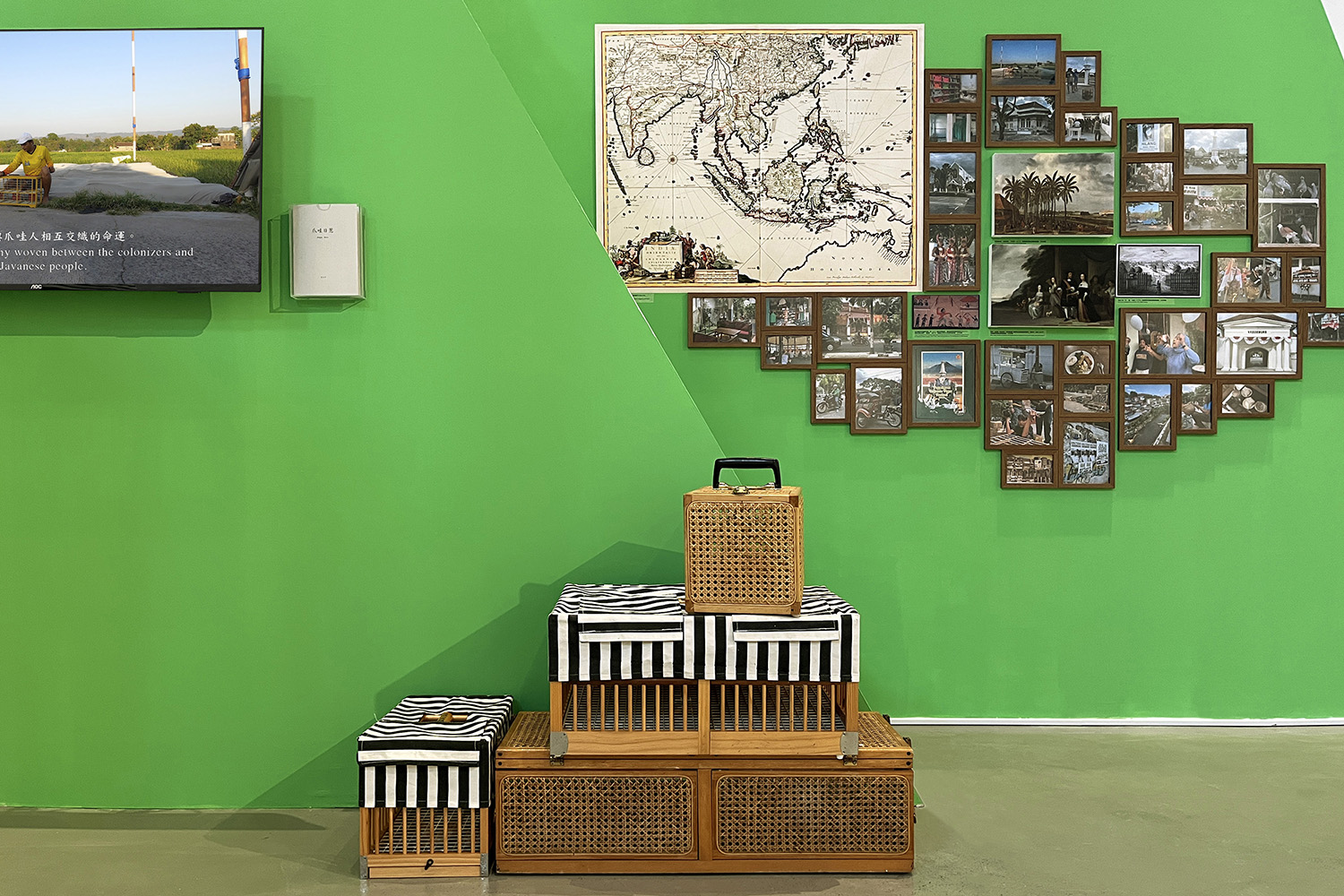 |
| |
|
| |
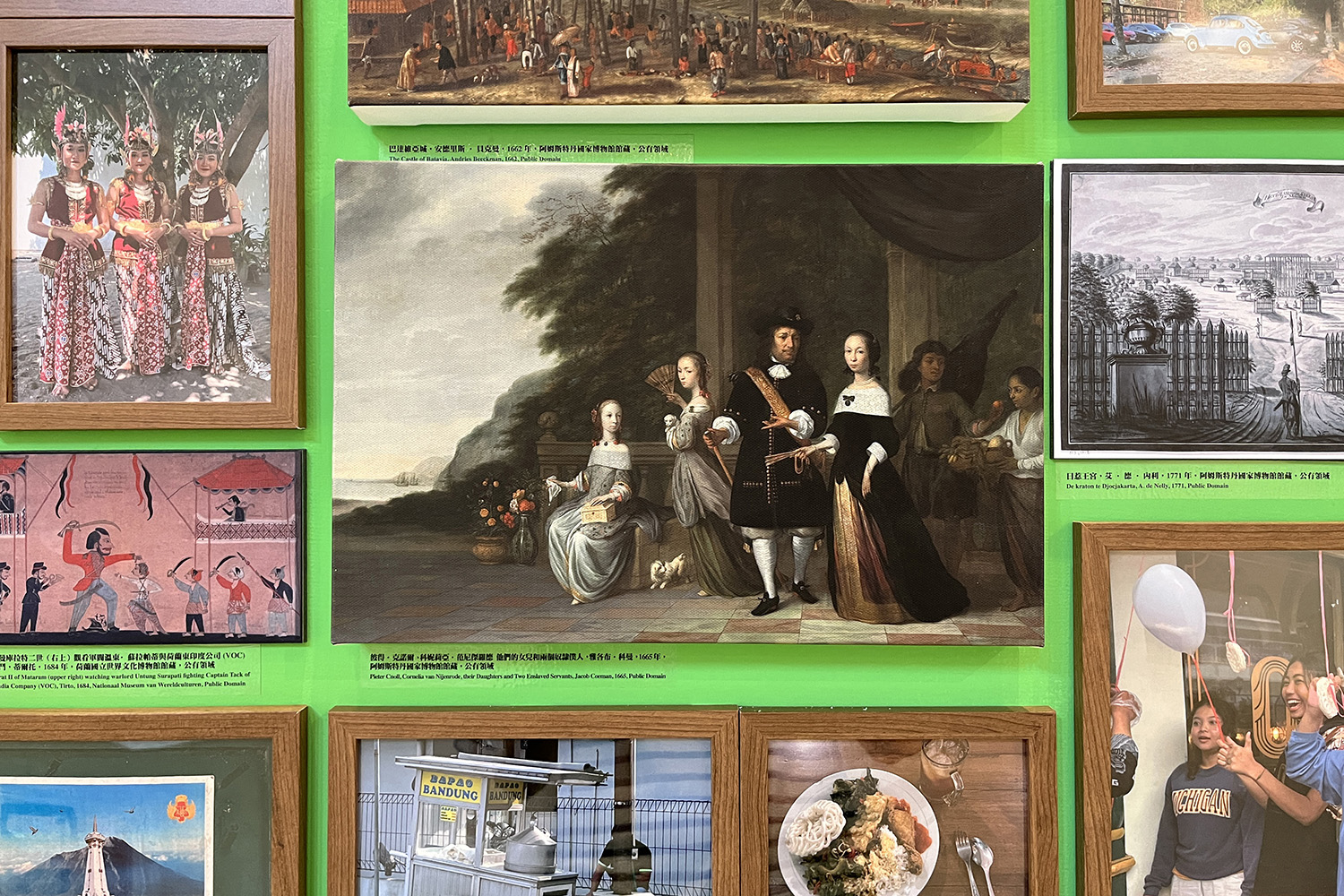 |
| |
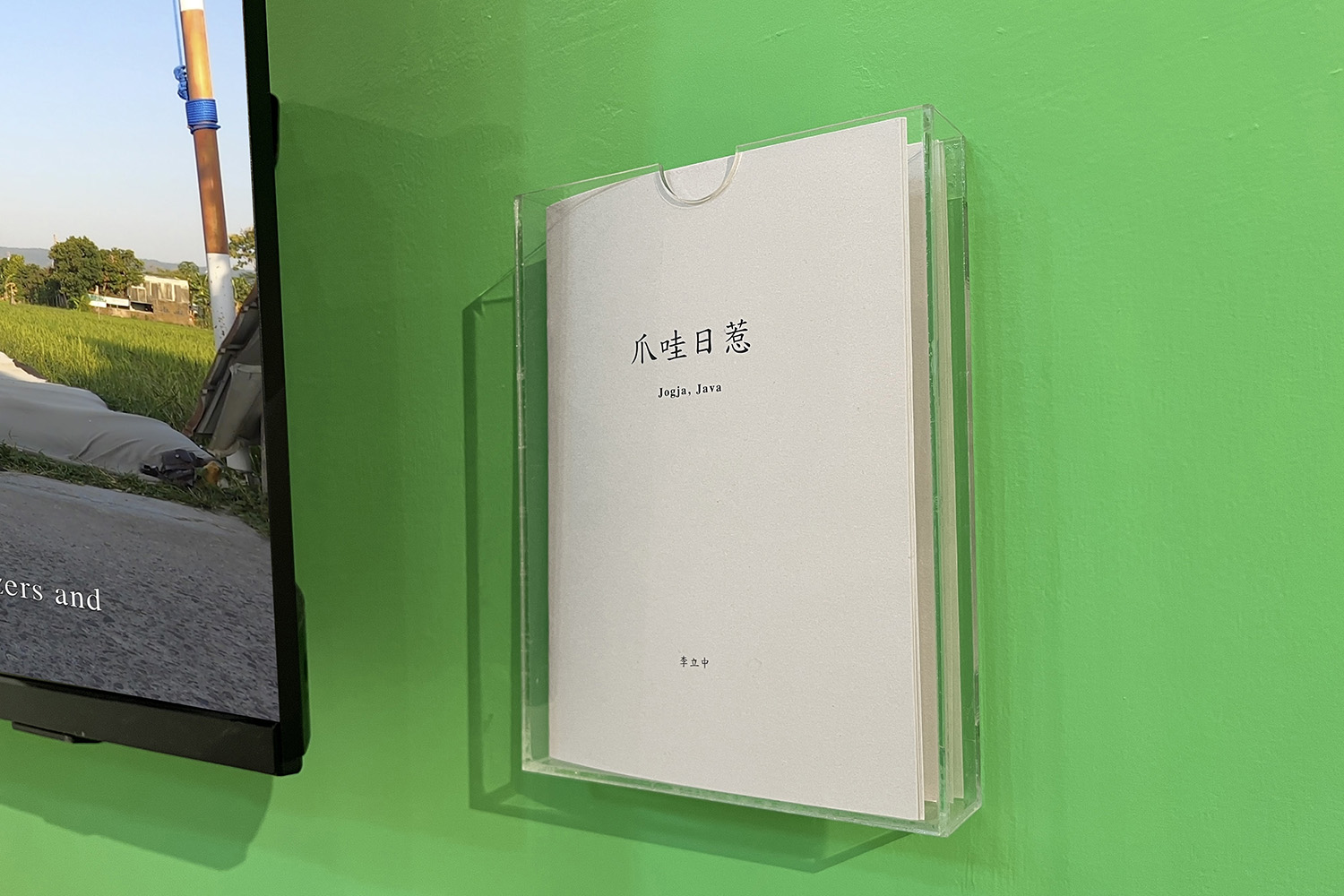 |
|
沃克、海怪、炮火與他們:熱蘭遮堡400年
台南市美術館 2024/03/28 - 06/16
VOC, Sea Monsters, Artillery Fire, and Them: 400 Years of Fort Zeelandia
Tainan Art Museum
Pontanus的日誌本06 蕭壠城記 & 02 顏思齊與魍港
The Diary of Pontanus 06 - The Story of Soulang City & 02 - Pedro China in Wankan
|
| |
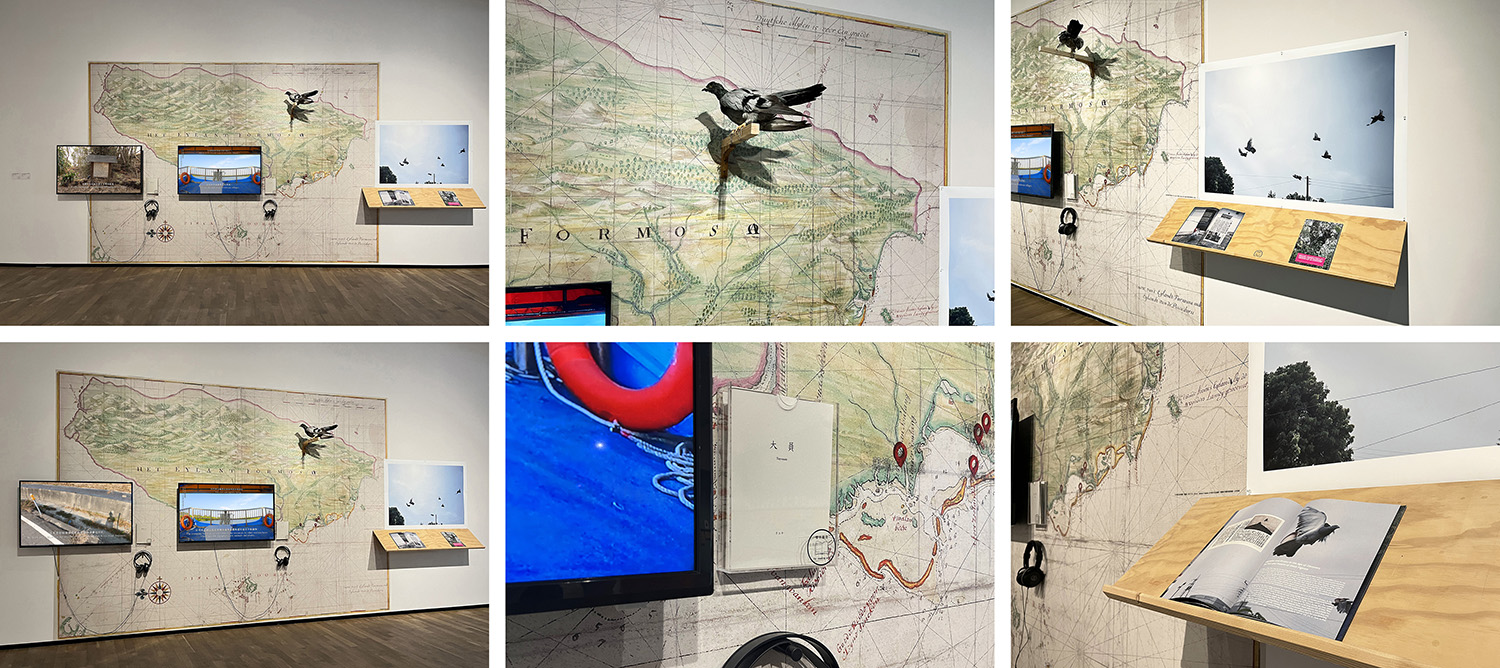 |
|
Pontanus的日誌本06 蕭壠城記,2023
蕭壠國際藝術進駐計畫,台南台灣
The Diary 06 of Pontanus - The Story of Soulang City, 2023
Siao-Long Cultural Park : Artists-in-Residence Program, Tainan Taiwan
第六輯《蕭壠城記》,蕭壠為臺南市佳里區舊名,其地名源自四百年前重疊於今蕭壠文化園區週遭的西拉雅族四大社之一,人口數頗多、社群發展活絡的蕭壠社(Soulang)音譯而來。蕭壠社既早在一六二三年荷蘭殖民政權覬覦福爾摩沙的前一年,便派人前來進行島嶼探勘所提及的地方,這份被稱為「蕭壠城記」的踏查報告後來也成為西方最早描述臺灣人的重要史料。四百年後的佳里區是臺南溪北大北門地區的政經中心,所幸鄰近南科設廠等諸多因素人口有回流現象,而逃過縣市合併後的南北經濟失衡、地方發展變遷等劫數,卻也間接導致熱區地價逐漸高漲。此作品將叩合國際藝術進駐計劃主題:欲透過藝術創作的形式,重新思考大臺南四百年的時空紋理變遷,伴隨著福爾摩沙處境與政經影響下的全球化、後殖民等現象。
|
|
| |
 |
| |
 |
| |
 |
| |
|
| |
 |
| |
 |
| |
 |
| |
|
| |
 |
|
Pontanus的日誌本05 諸羅山,2022
+1藝術進駐計畫,嘉義市立美術館, 嘉義台灣
The Diary 05 of Pontanus - Tirosen, 2022
+1 Art Base Program , Chiayi Art Museum, Chiayi Taiwan
第五輯《諸羅山》,諸羅山原為嘉義舊名,源自平埔族Tirosen社音譯而來。作品的主要敘事場域橫跨嘉義市美術館、東市場週遭,曾為400年前諸羅山社的主要聚落,也是大員(今台南)以北重要村社的政治中心,更是殖民政權宣告主權鑿井興建紅毛井的所在地。嘉義市建城至今三百餘年,鄰近阿里山的地利之便促使迅速成為現代化的城市,特別是見證林業發展興衰,留下許多產業設施、木造房屋等歷史遺跡。此作係透過Pontanus的視角與筆觸再度走訪當代諸羅山,想像那年他的到訪所見與所聞的城市變化。
|
|
| |
 |
| |
|
| |
 |
| |
 |
| |
 |
| |
 |
| |
|
| |
 |
|
Pontanus的日誌本04 燕潭,2023
跨入風景──劃地起造的自然,台南市美術館,台南台灣
The Diary 05 of Pontanus - Yen-Tan, 2023
Step in the Scenery: Landscape the Nature, Tainan Art Museum, Tainan Taiwan
第四輯《燕潭》即是以多重穿越的方式與台灣前輩畫家廖繼春在台南公園的歷史現場邂逅,想像著與他一同環繞公園湖泊,走訪當年燕潭的繁景。縱觀燕潭與其周遭支流文元溪隨著時間淬煉而日漸消逝,作為台南古都歷史脈絡發展及城市紋理的變化,也見證台灣位處國際航海霸權的世界貿易體系歷史洪流中的遭遇。十七世紀的大航海時代太遙遠到與我無關,但留存的史料卻額外的如此貼近。最終,在化身為Pontanus的視角與筆觸下看見台南公園的前世今生,想像若幻化成一羽鴿子又該如何在公園的狹縫裏生存。 |
|
| |
 |
| |
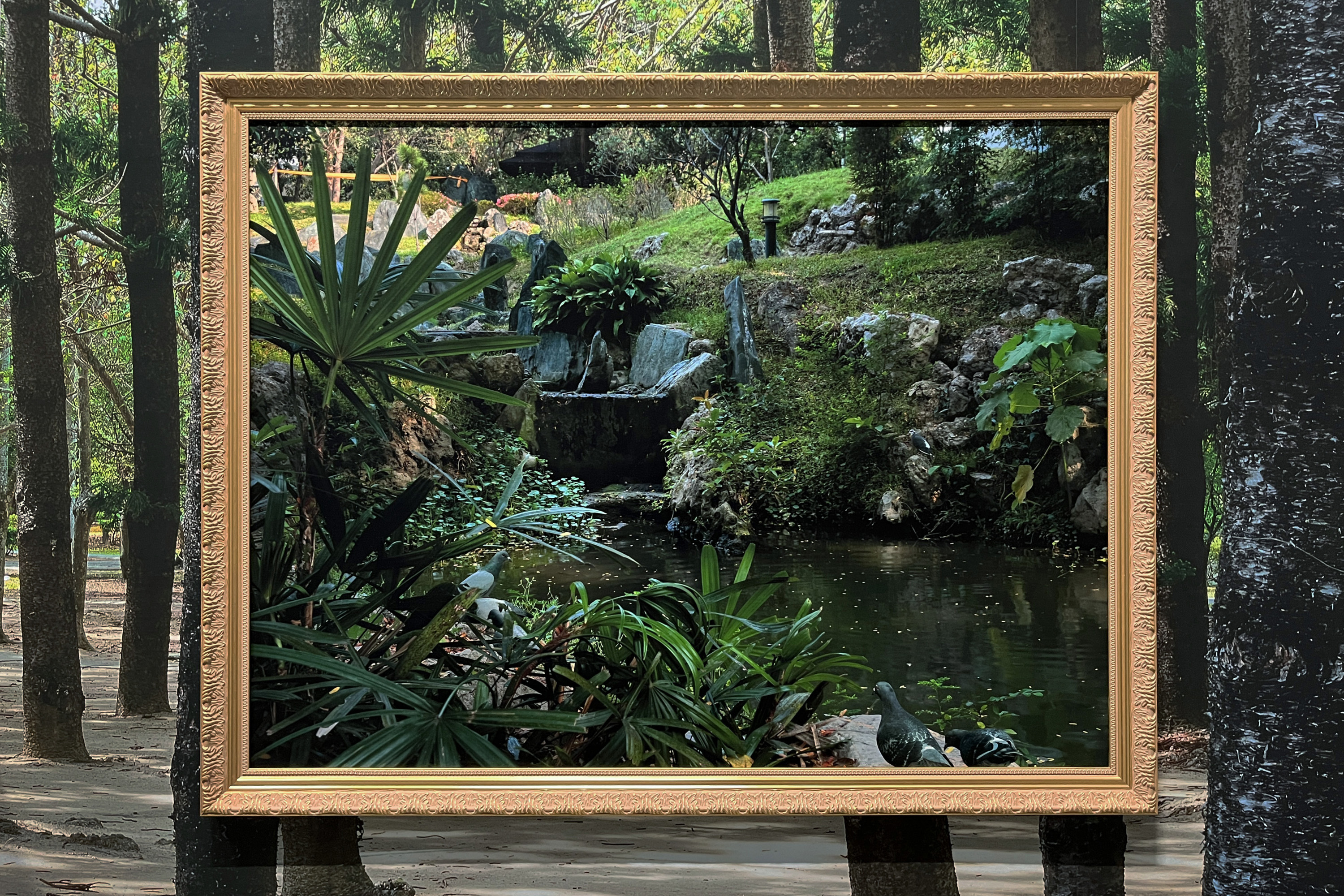 |
| |
 |
| |
|
| |
 |
| |
 |
| |
 |
|
Pontanus的日誌本03 新港社,2022
遺址前彎身 · 當代後凝視—在南科遺址上現考現學,南科考古館,台南台灣
The Diary 03 of Pontanus - Sinckan, 2022
Bowing and Gazing at the Archaeology Heritage - The Modernology at Tainan Science ParK,
Tainan Branch of NMP, Taipei Taiwan
第三輯《新港社》,在大量史料的挖掘爬梳下,翻找出三百多年前歐陸畫家筆下栩栩如生的鴿子樣貌,又無意間發現荷蘭東印度公司雇員Pontanus,透過他的日誌筆觸來到西拉雅四大社之一,新港社,現今南科所在地。我試著重新踏察十七世紀荷蘭殖民路線與他的足跡,以大航海時代小人物的視角,趁隙一面尋找心愛的菜鴿身影,同時也關注城市地景紋理的變化。 |
|
| |
 |
| |
 |
| |
|
| |
 |
| |
 |
| |
 |
| |
 |
|
穿越交會區,日惹皮影戲博物館,日惹印尼
Exhibition Crossing Ecotones in Museum Sonobudoyo, Yogyakarta
2023/08/19 - 08/25
Pontanus的日誌本 02 顏思齊與魍港
The Diary 02 of Pontanus - Pedro China in Wankan |
| |
 |
|
粉鳥,月之美術館,台南市文化局,台南台灣,2021
攝影、檔案再製、聲音、書寫、手繪
尺寸依現場而定
Hún-tsiáu", YUEJIN Art Museum,Cultural Affairs Bureau, Tainan City Government, 2022
Photography, Archival Reproduction, Voice, Writing, Drawing
Dimensions Variable
Pontanus的日誌本 02 顏思齊與魍港
The Diary 02 of Pontanus - Pedro China in Wankan
|
| |
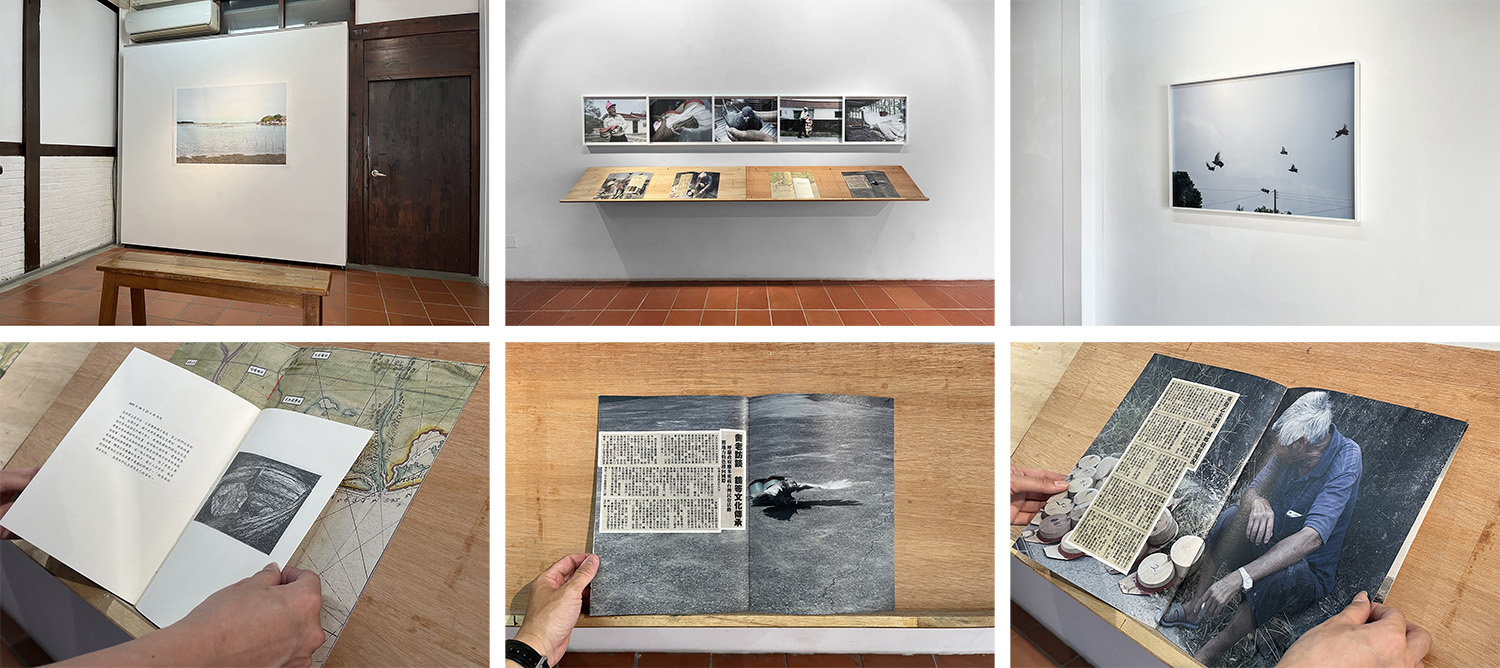 |
|
Pontanus的日誌本02 顏思齊與魍港,2022
粉鳥(藝術誌 + 聲音)
The Diary 02 of Pontanus - Pedro China in Wankan, 2022
Pigeon(Art Book and Voice)
第二輯《顏思齊與魍港》,則刊載在《粉鳥》(藝術誌+聲音)裏,鴿子作為航海人指引方位距離的工具,也一路隨著海盜移民落腳在這座島嶼上。在歷經時空演變、殖民流動下,他們已不如以往活躍。『粉鳥』是地方上對鴿子的暱稱,作品『粉鳥』則是重返歷史現場的觀看,從大航海時代小人物的視角,四百年前海盜登陸的聲音想像,連結僅存於台南溪北的地方民俗『揹鴿笭』。以『粉鳥係欲飛去佗位』這句話一路追溯鴿子何時來到台灣所延伸出的主體性,我欲透過考古又考現兼帶點地誌學的方法,以影像+書寫彼此互文與指涉,趁隙一面尋找自己心疼未受重視的菜鴿身影(考古),同時也關照地方文化發展聚落(考現)
The work "Hún-tsiáu" is composed of an art book and voice, in "The Diary 02 of Pontanus - Pedro China in Wankan" is attached to the art book. Pigeons used to serve as a tool to navigate and assess distance in nautical settings. As time advanced, these birds also settled on this island along with pirates and immigrants. With changes in time, space, and even colonialism, they are no longer as active as before. "Hún-tsiáu" is the local nickname for pigeons in Taiwan, and this work, Hún-tsiáu, is a return to the historical scene. From the perspective of small figures in the Age of Discovery and the sound imagination of pirates landing Taiwan four hundred years ago, this work aims to depict the local folk activity of pigeon whistle racing which only exists in the northern Tainan area nowadays. Building on the Taiwanese saying, "Where are you going, you pigeons?", this work traces the subjectivity extended from pigeons when they first came to Taiwan. By focusing both on archeology and narratives for the present, and a bit of topographic methodology, I wish to use images and writing as coreference and, at the same time, record the pigeon culture neglected by most people (archaeology) and care for the local cultural development in various settlements (narratives for the present).
|
|
| |
 |
| |
|
|
Pontanus的日誌本01 海牙人的森林,2022
南瀛獎,新營文化中心,台南台灣
The Diary 01 of Pontanus - Hagenaars Bosch, 2022
Nanying Award, XinYing Culture, Tainan Taiwan
首輯《海牙人的森林》,海牙人的森林是哈赫拿爾森林的台語音譯,將近四百年碩果僅存至今,是高度開發城市裏僥倖未破壞的生態森林,一旁還有溪流潺潺流水而過。但近年地方政府計劃對森林做大規模土木整治,此作藉以穿越劇為敘事背景,在高密度重疊的時空紋理下,透過這位小人物的視角將守護文資與經濟開發的兩端聲音化為一趟森林探險的浪漫史詩。
The forest of the Hague people is the Taiwanese transliteration of the Haagse Bos. It has survived for nearly 400 years as the only one to this day, as an ecological forest that has not been destroyed in a highly developed city with running river aside. However, in recent years, local governments have planned to carry out large-scale civil remediation of this forests. This piece adopts the time-travel drama form as the narrative background. Under the high-density overlapping time and space contexture, through the perspective of this humble person, the voices of the two ends - cultural resources protection and economic development are transformed into a romantic epic in a forest adventure.
|
|
| |
 |
| |
 |
| |
 |
| |
|
| |
 |
| |
|
| |
 |
| |
 |
|
| © Lee Lichung 2023, All Rights Reserved |


















